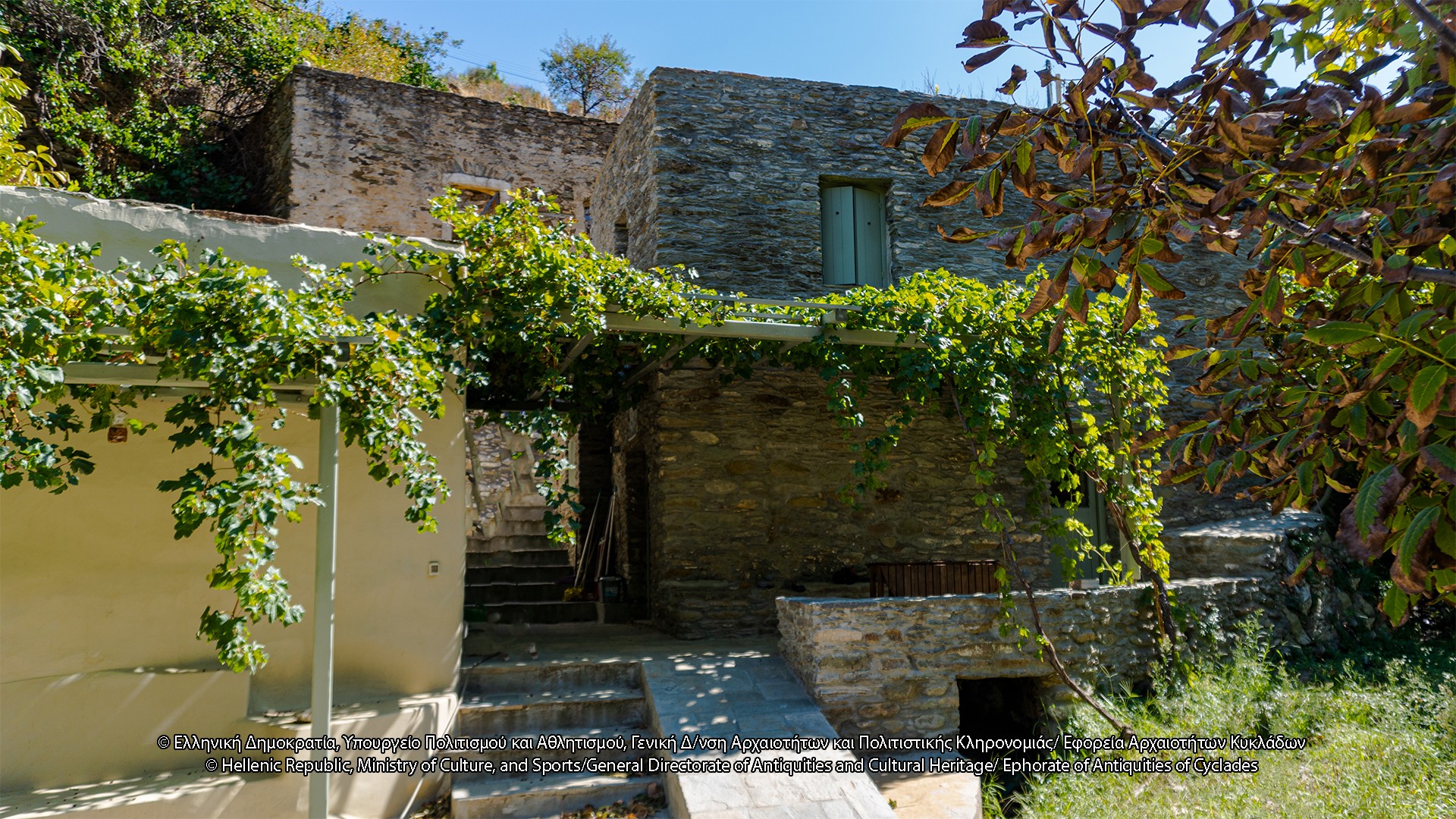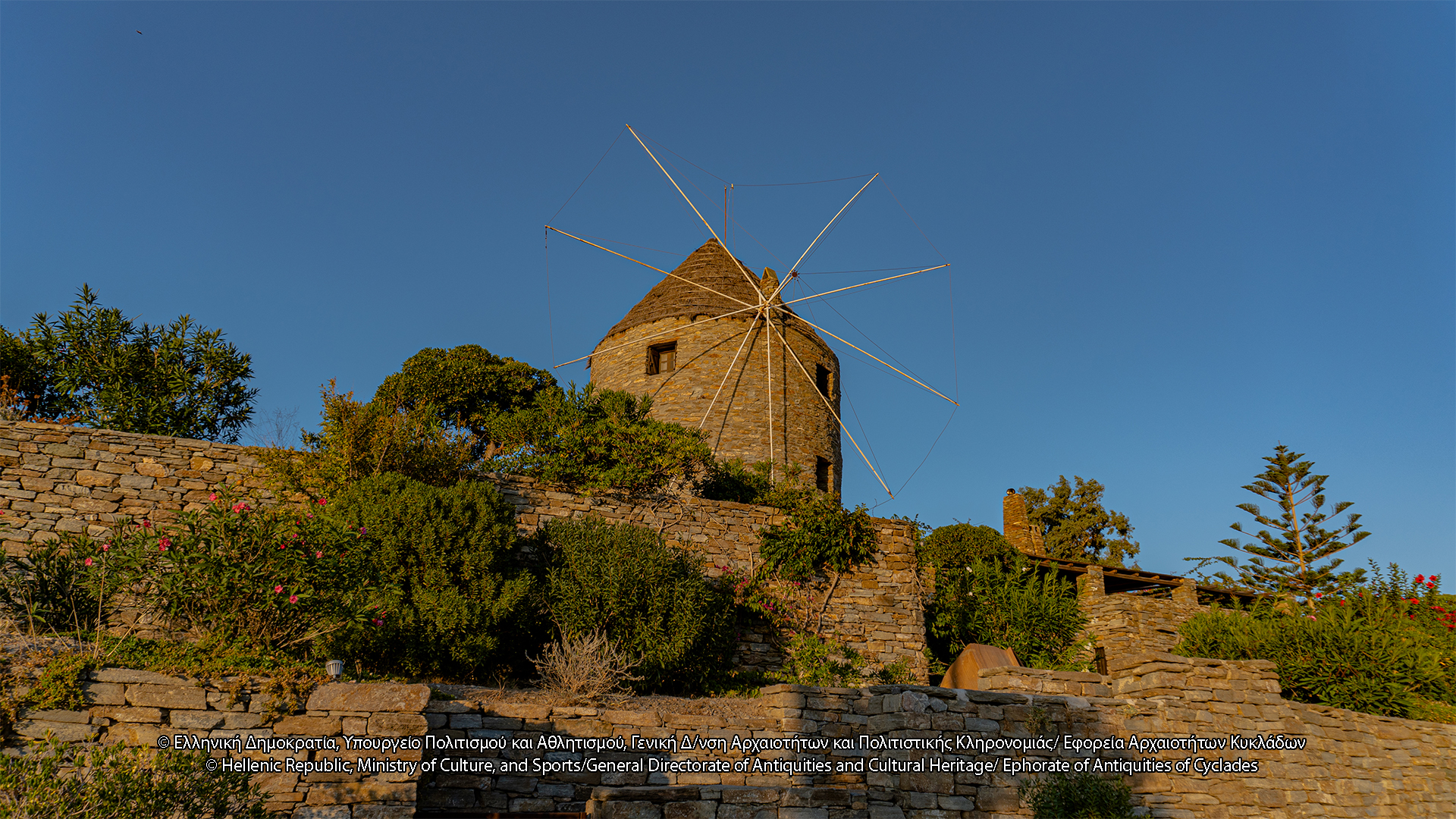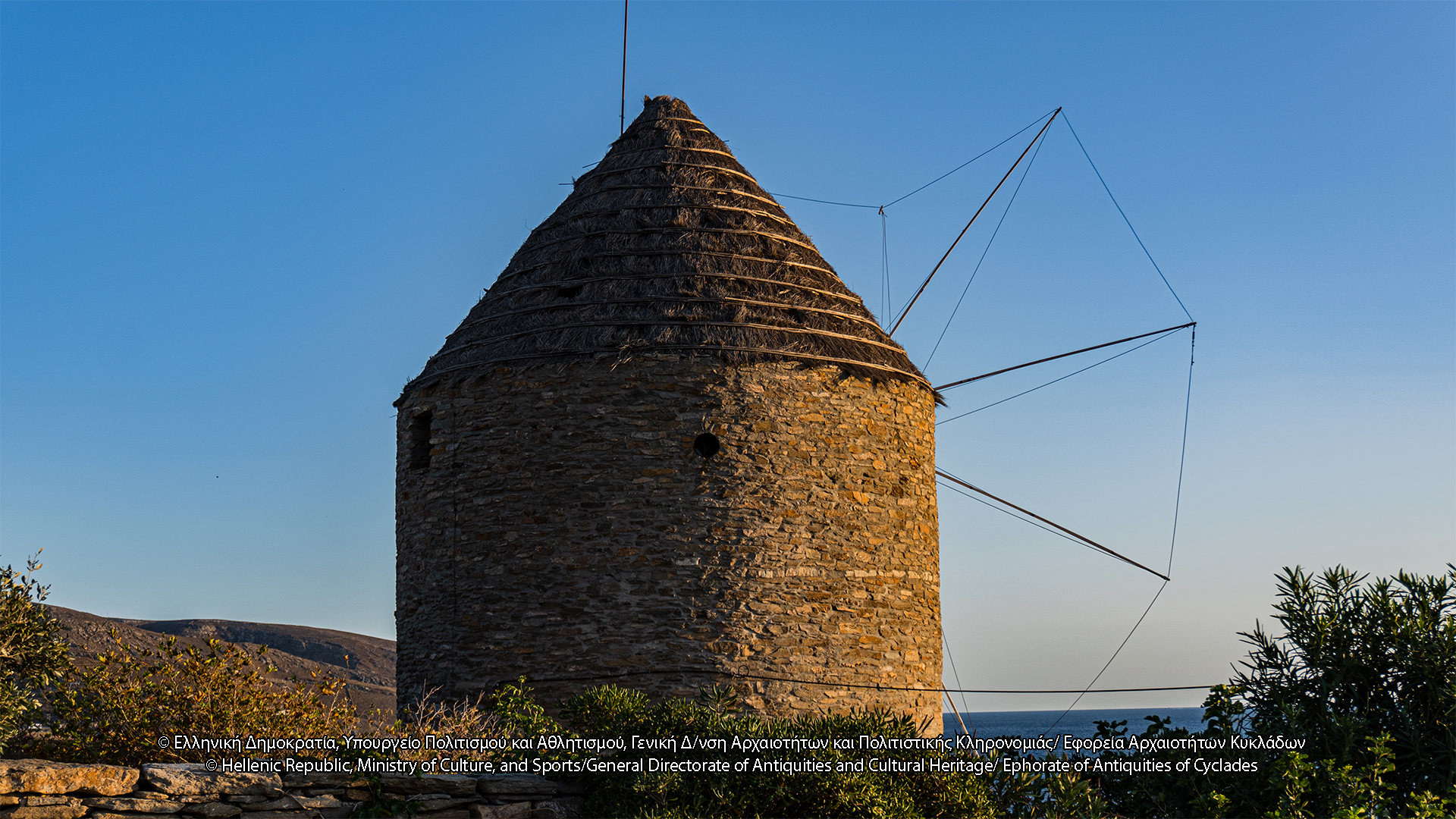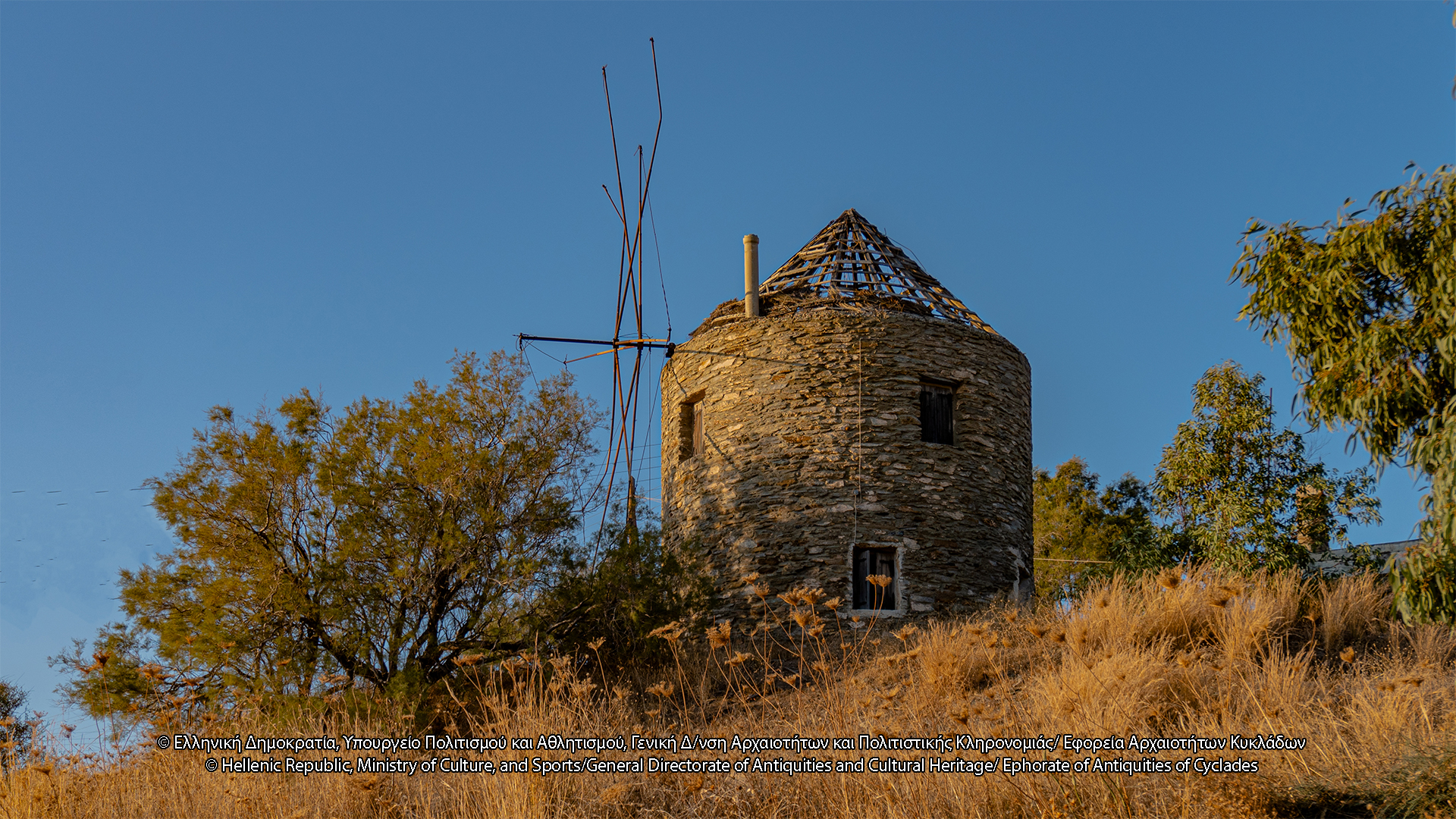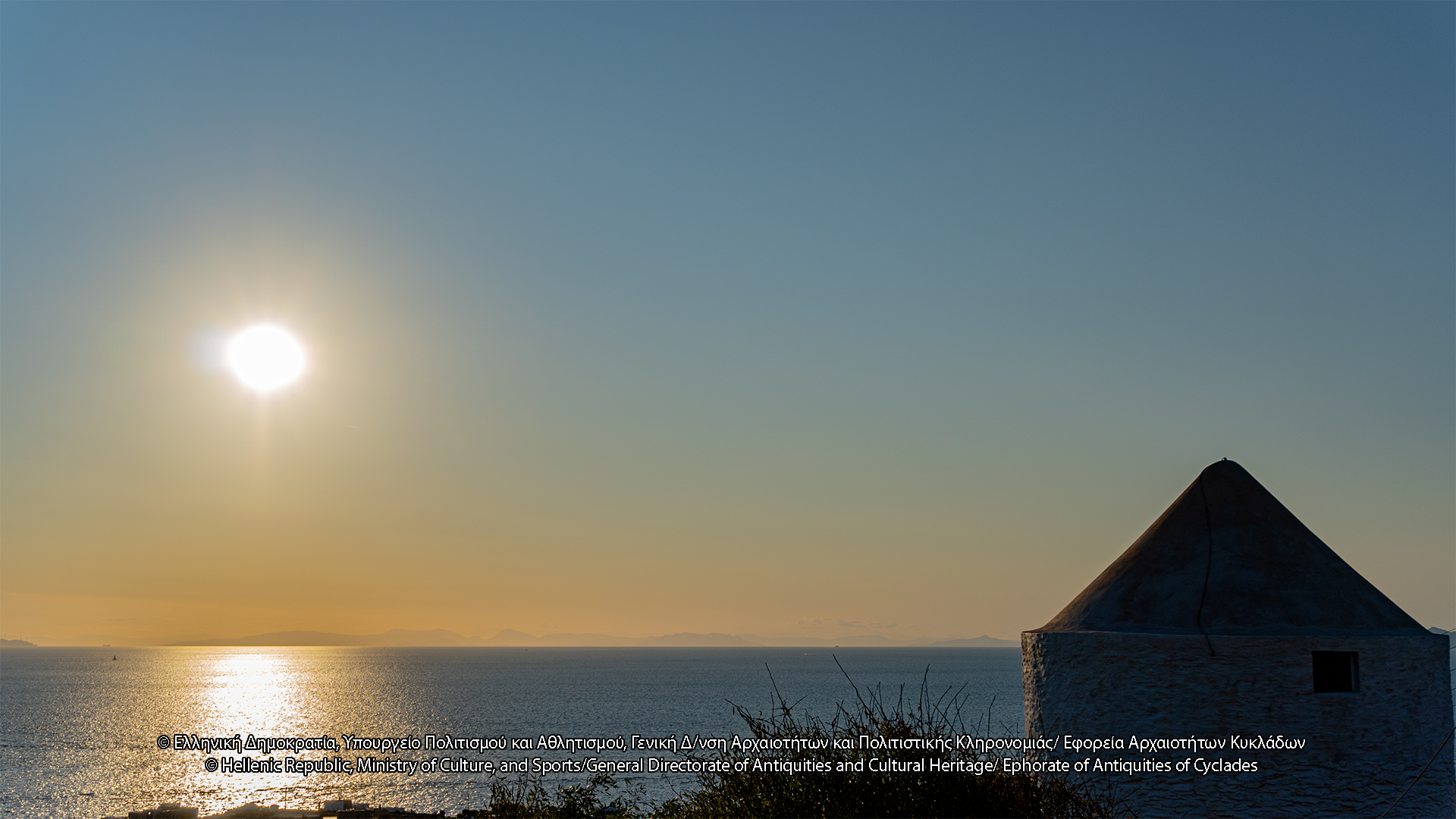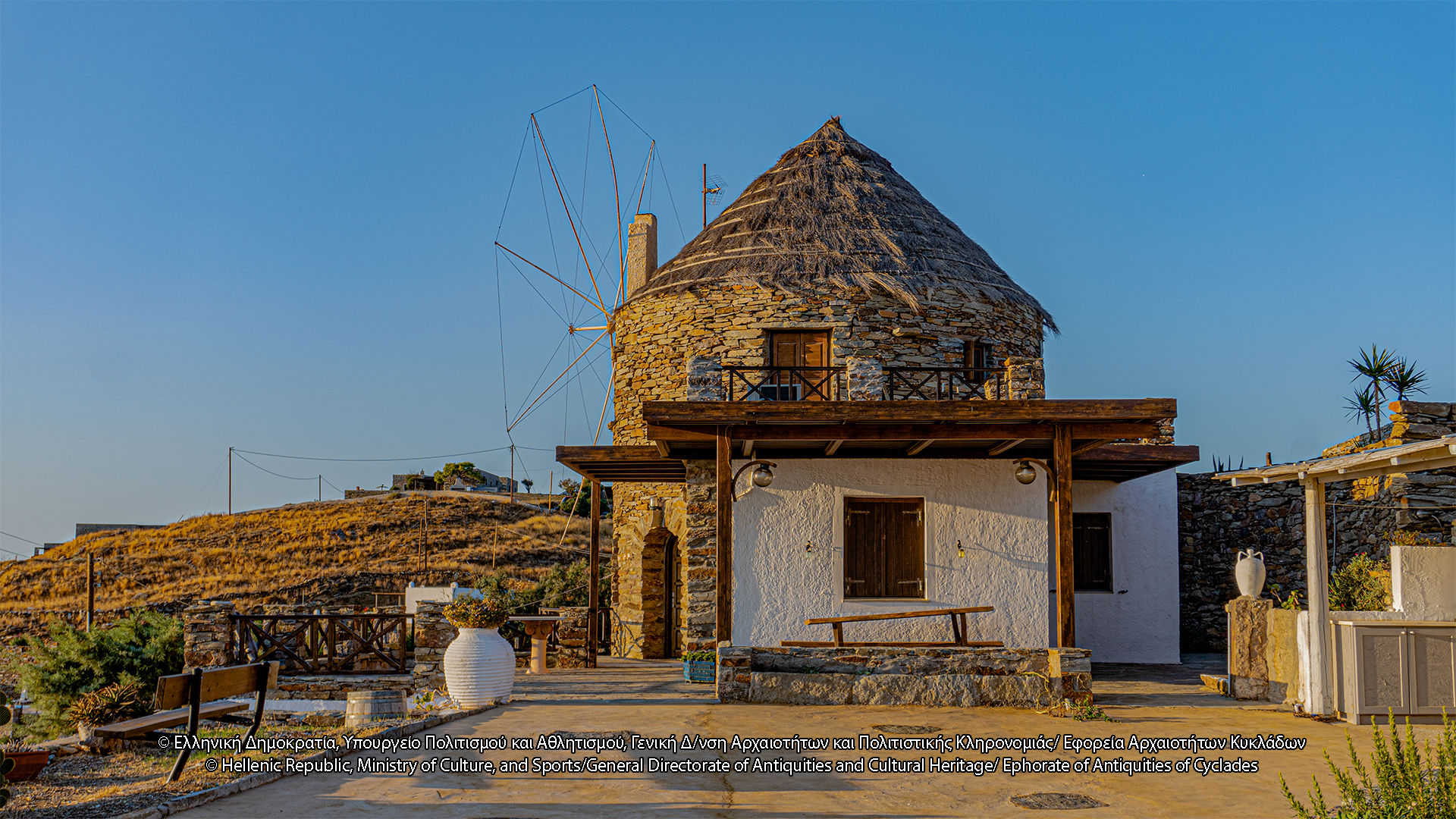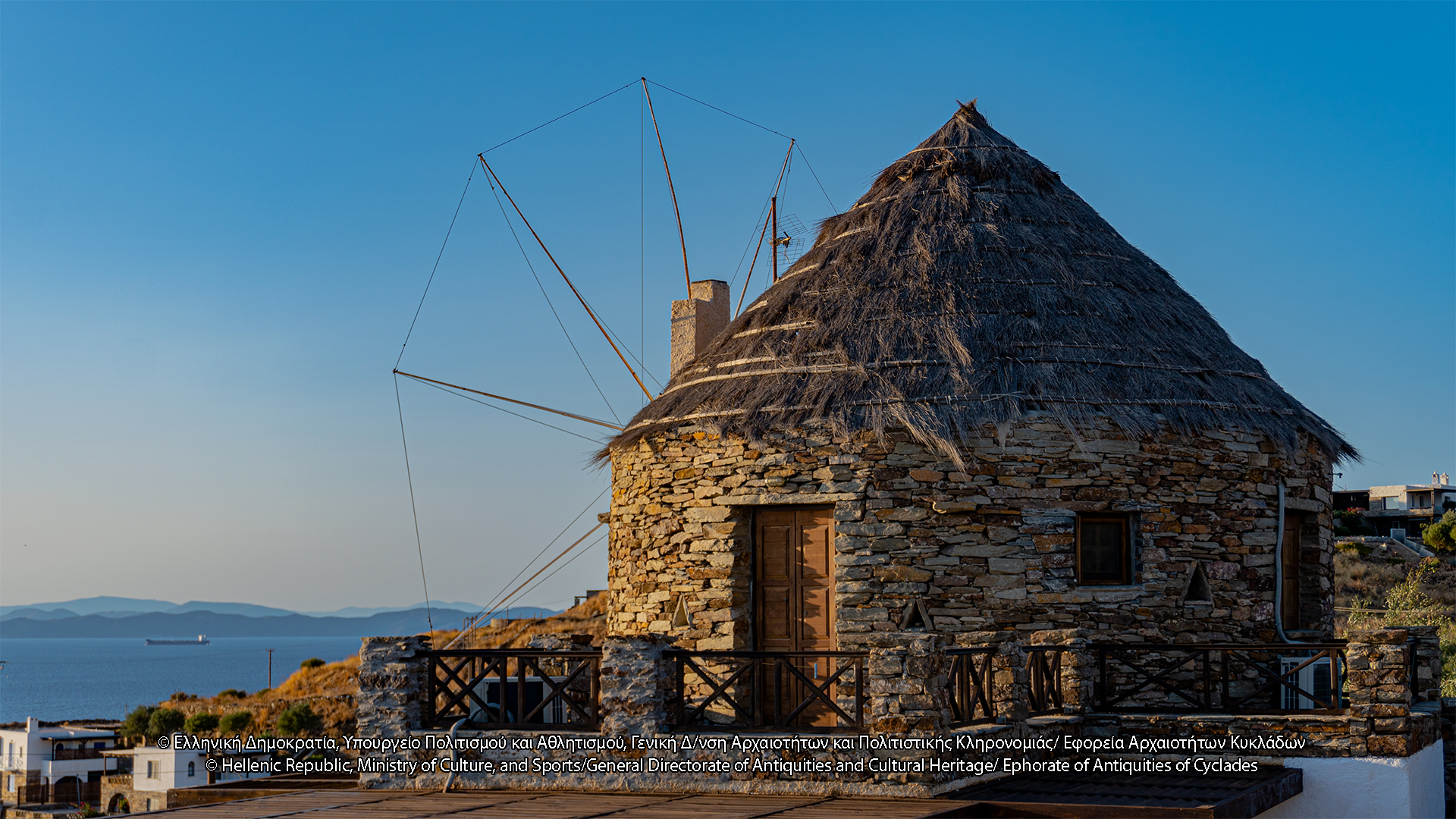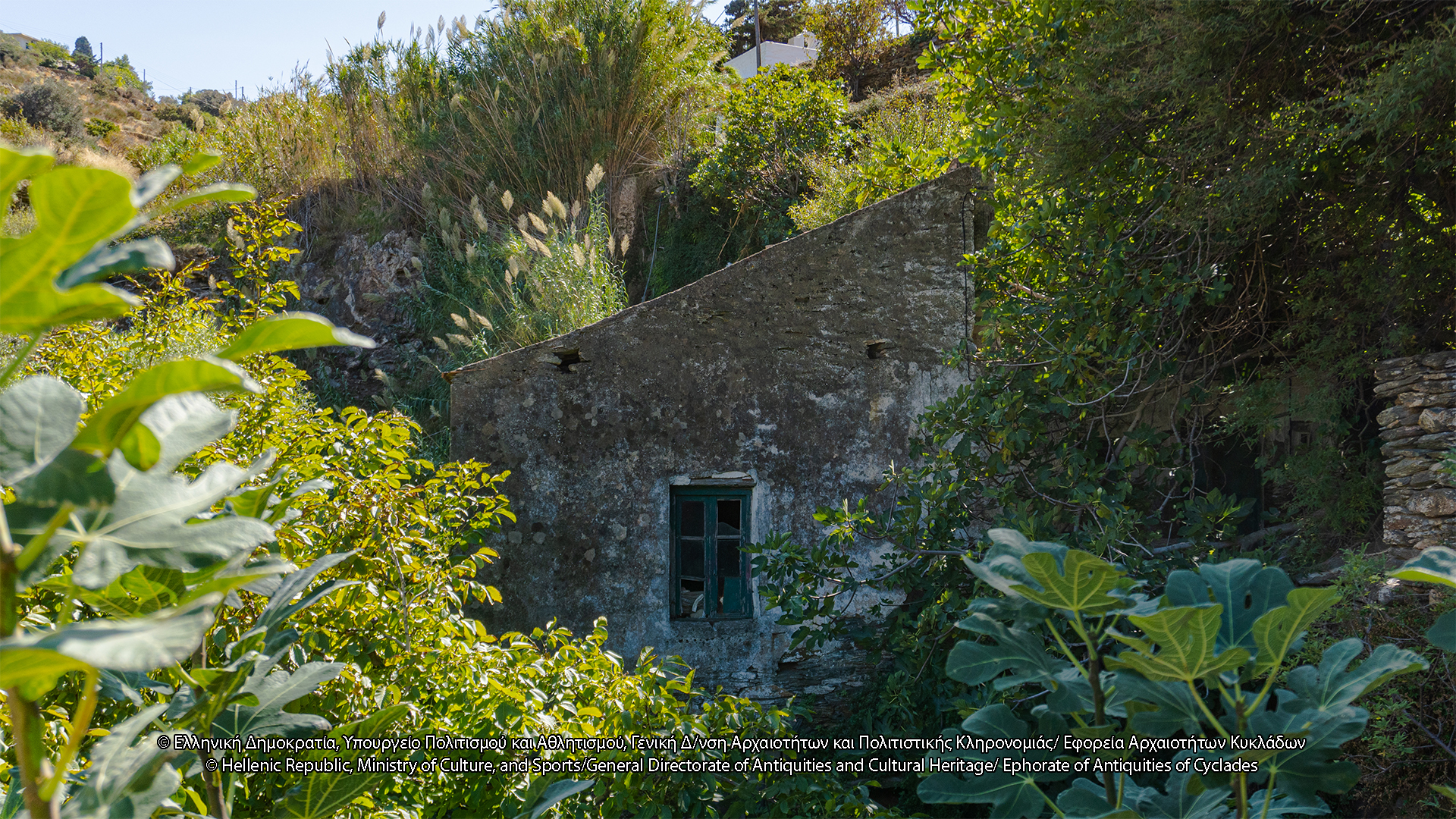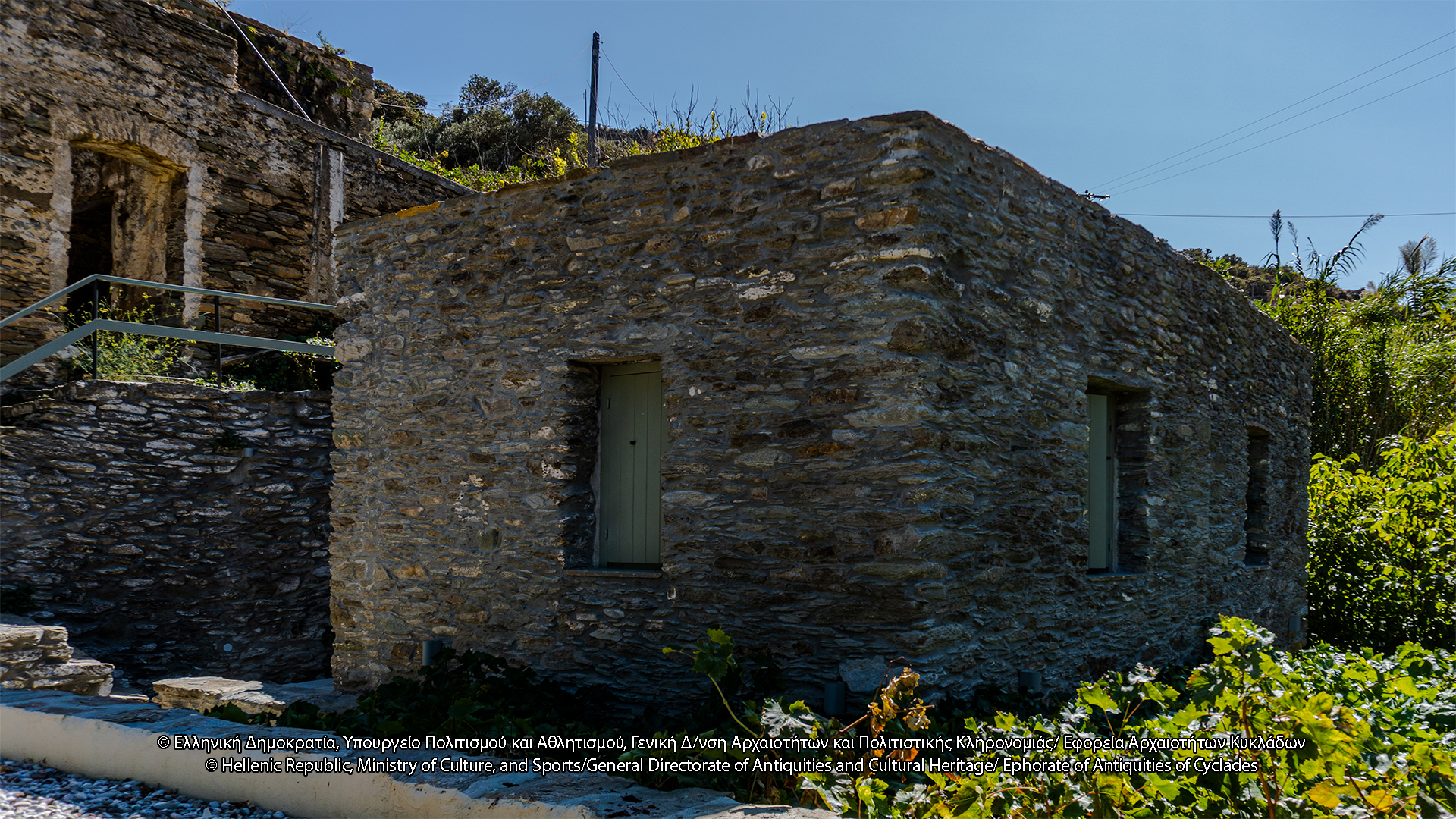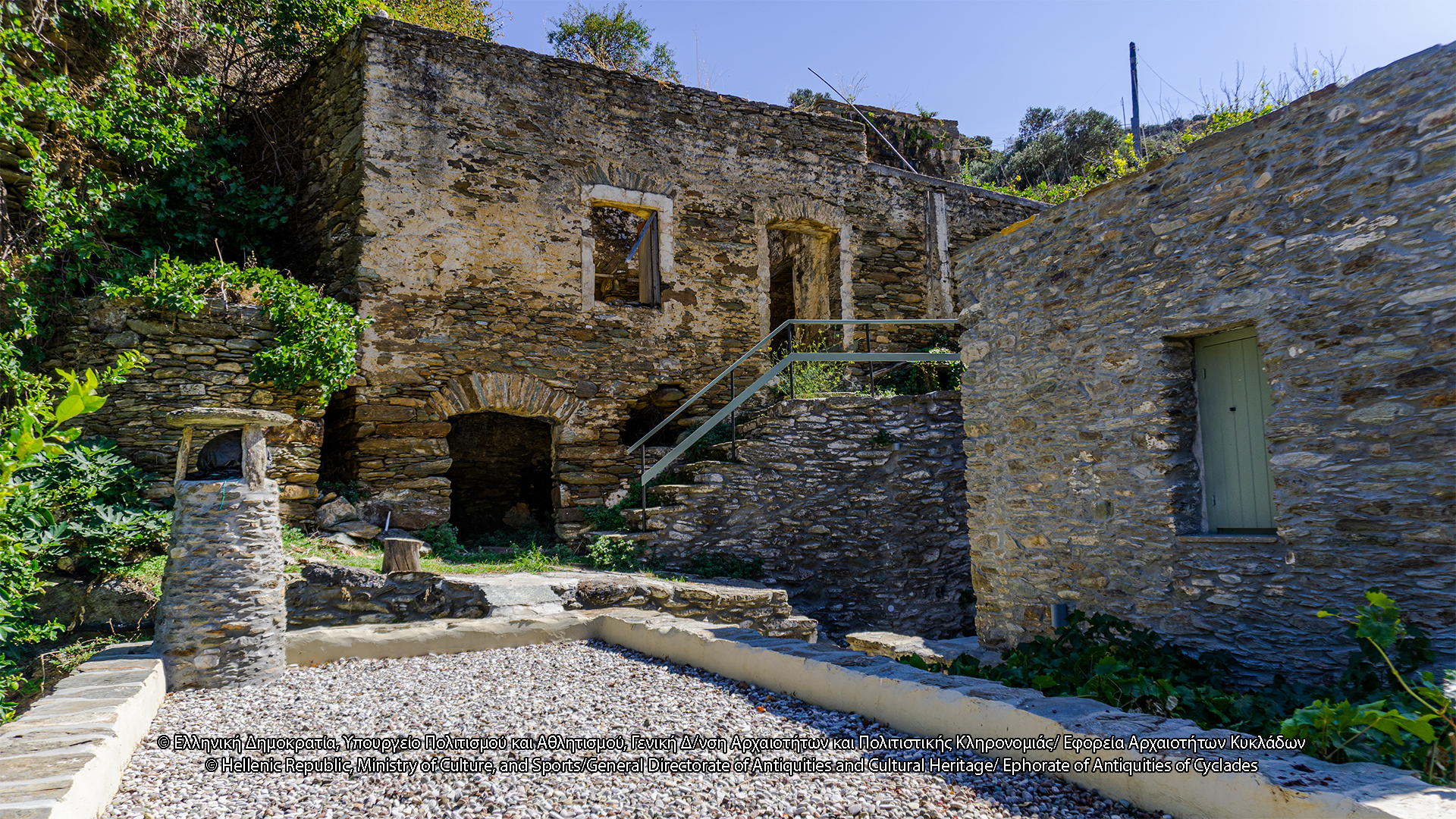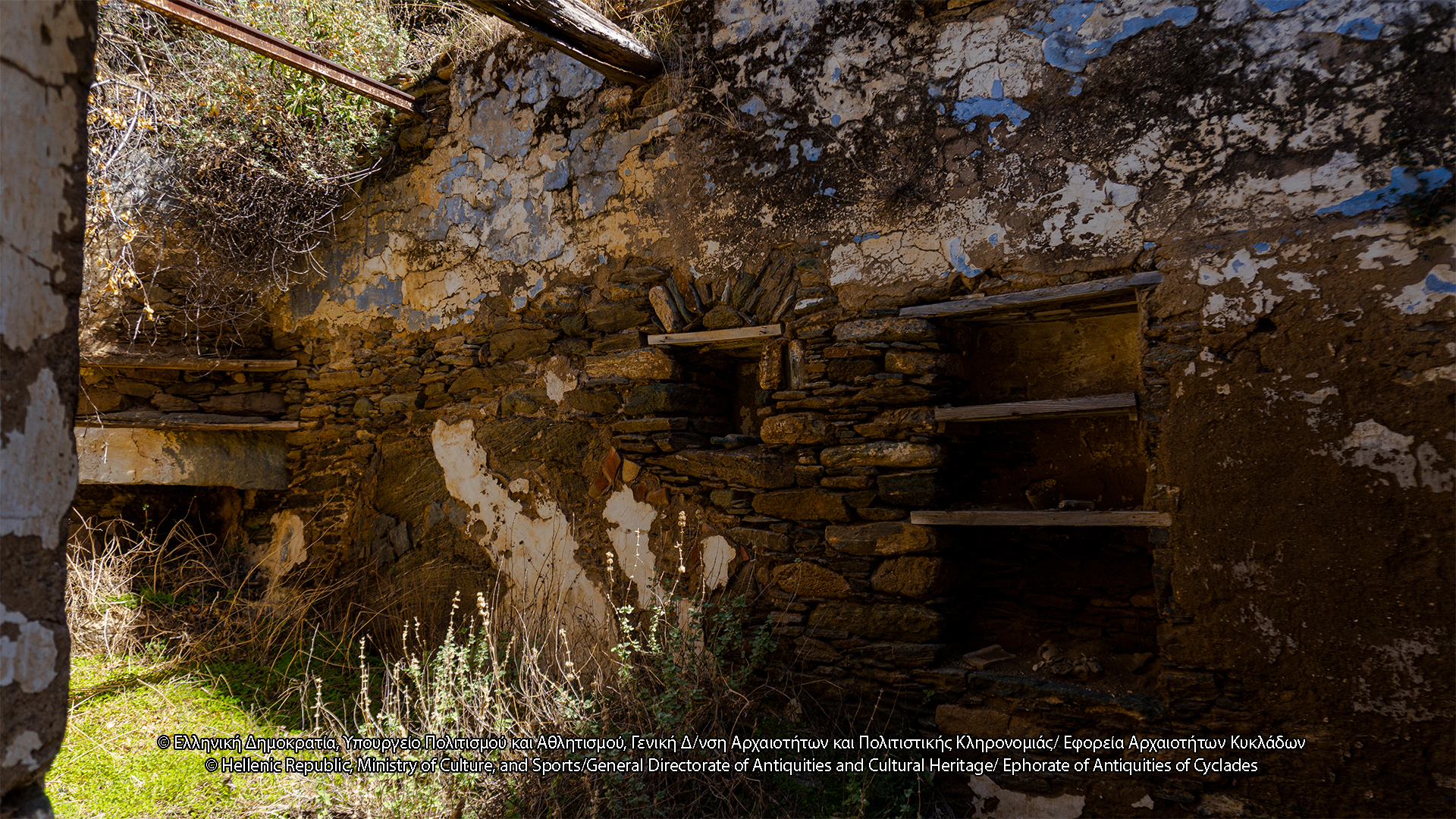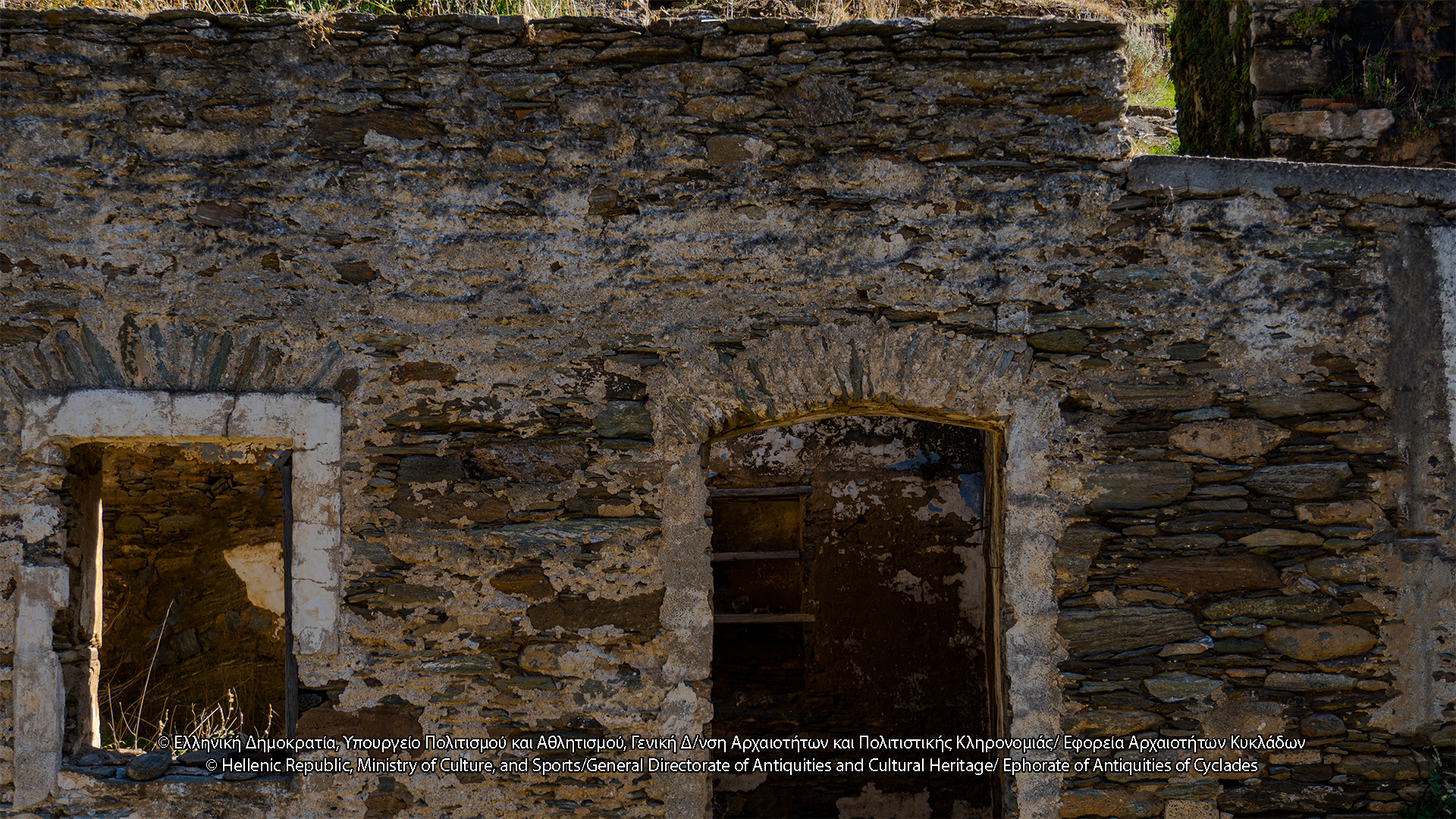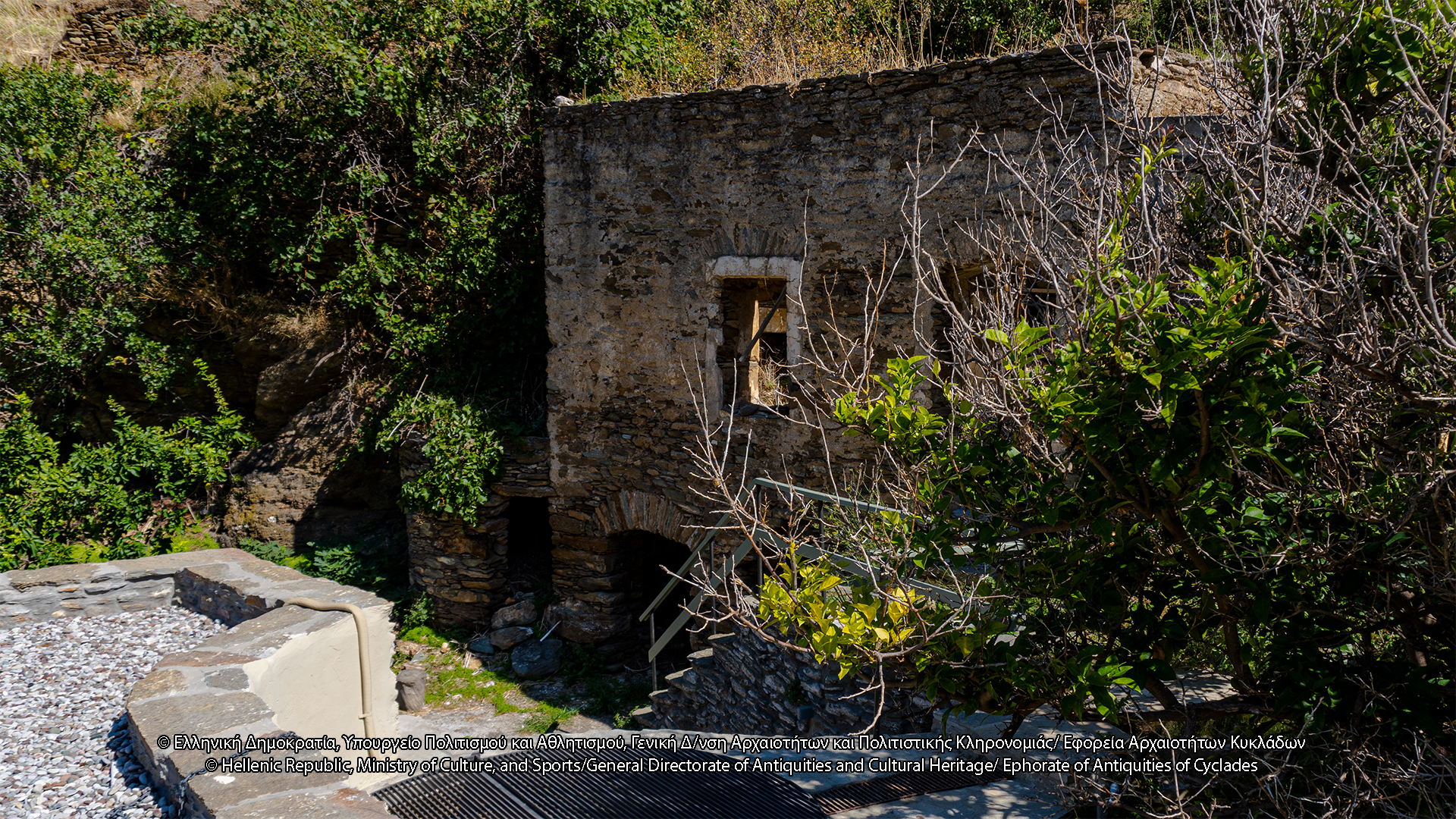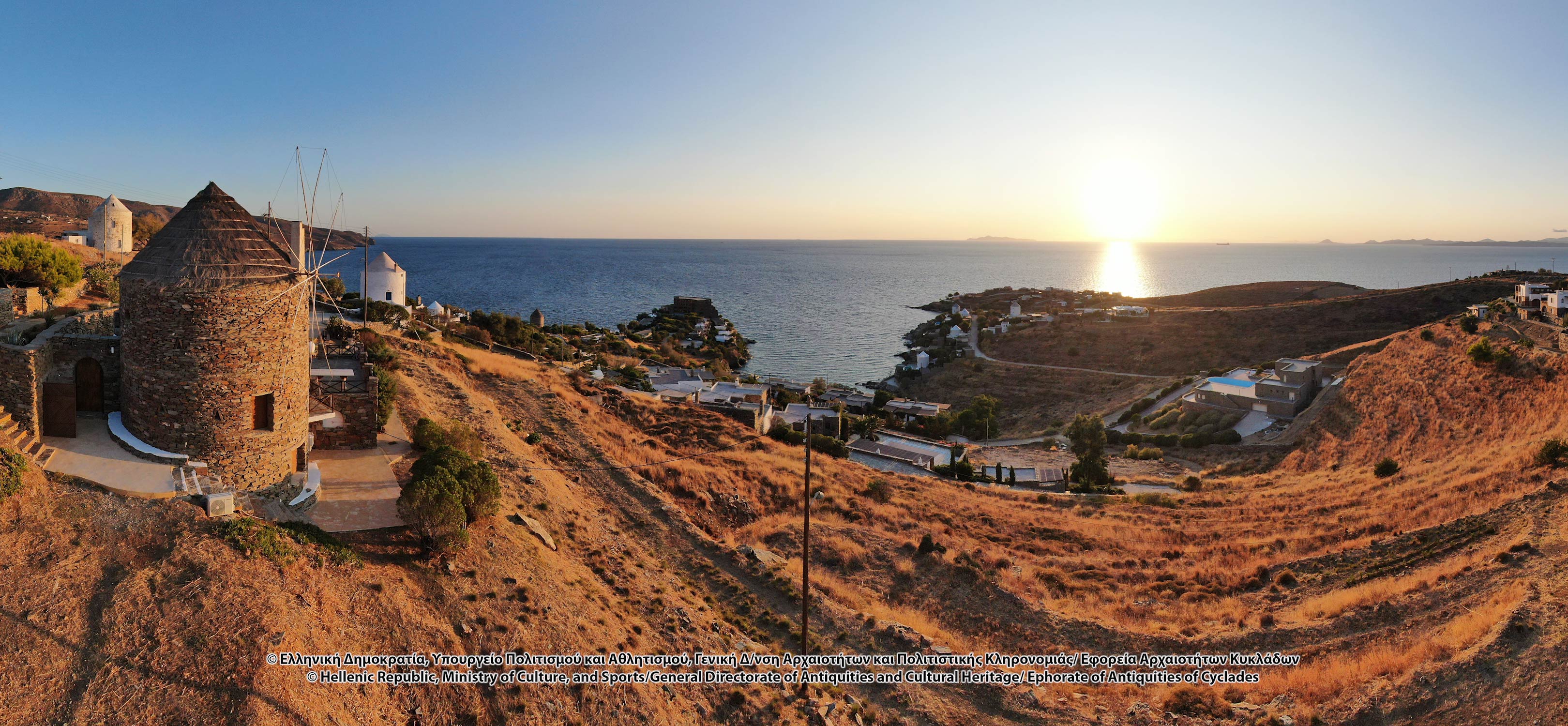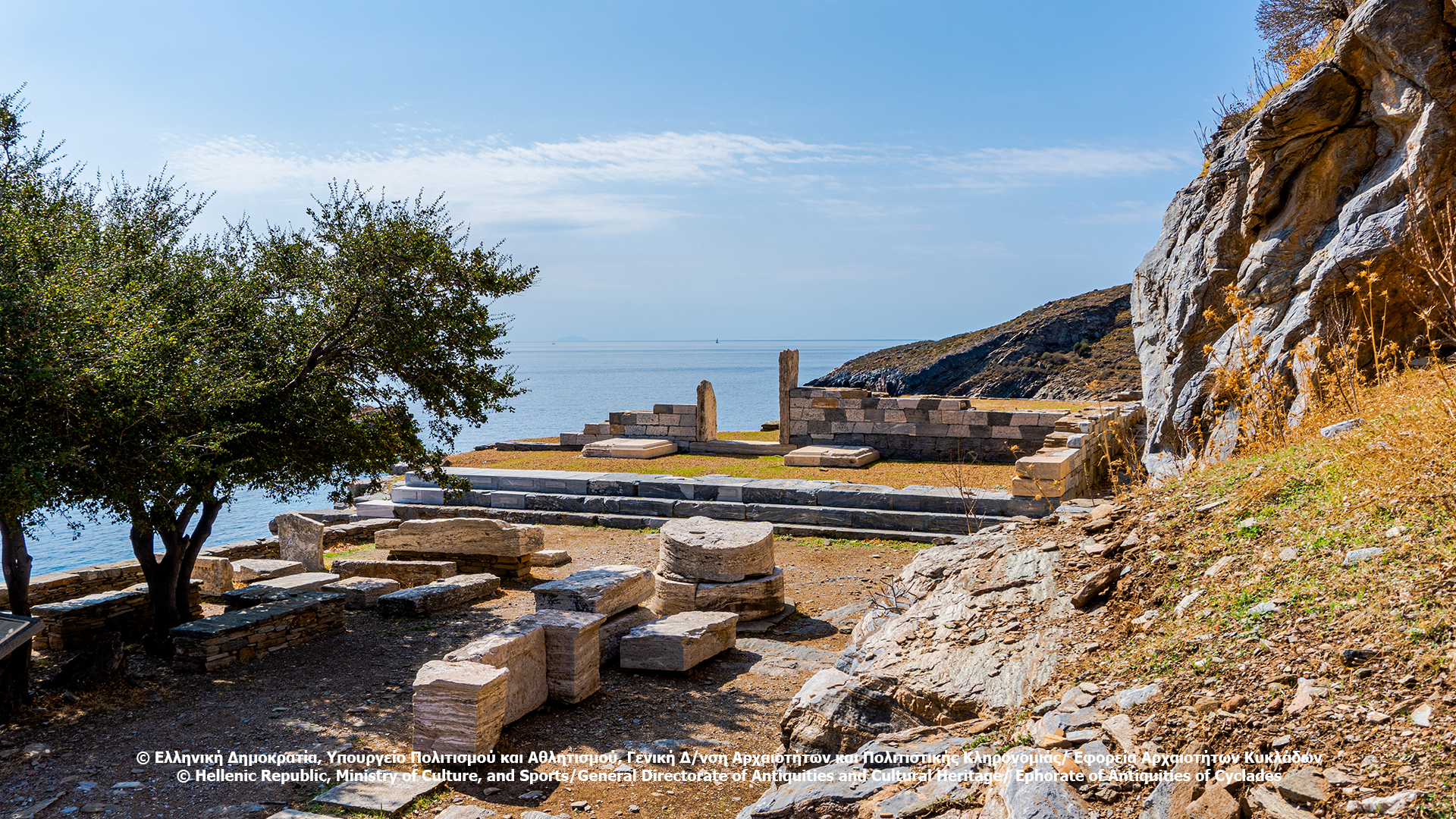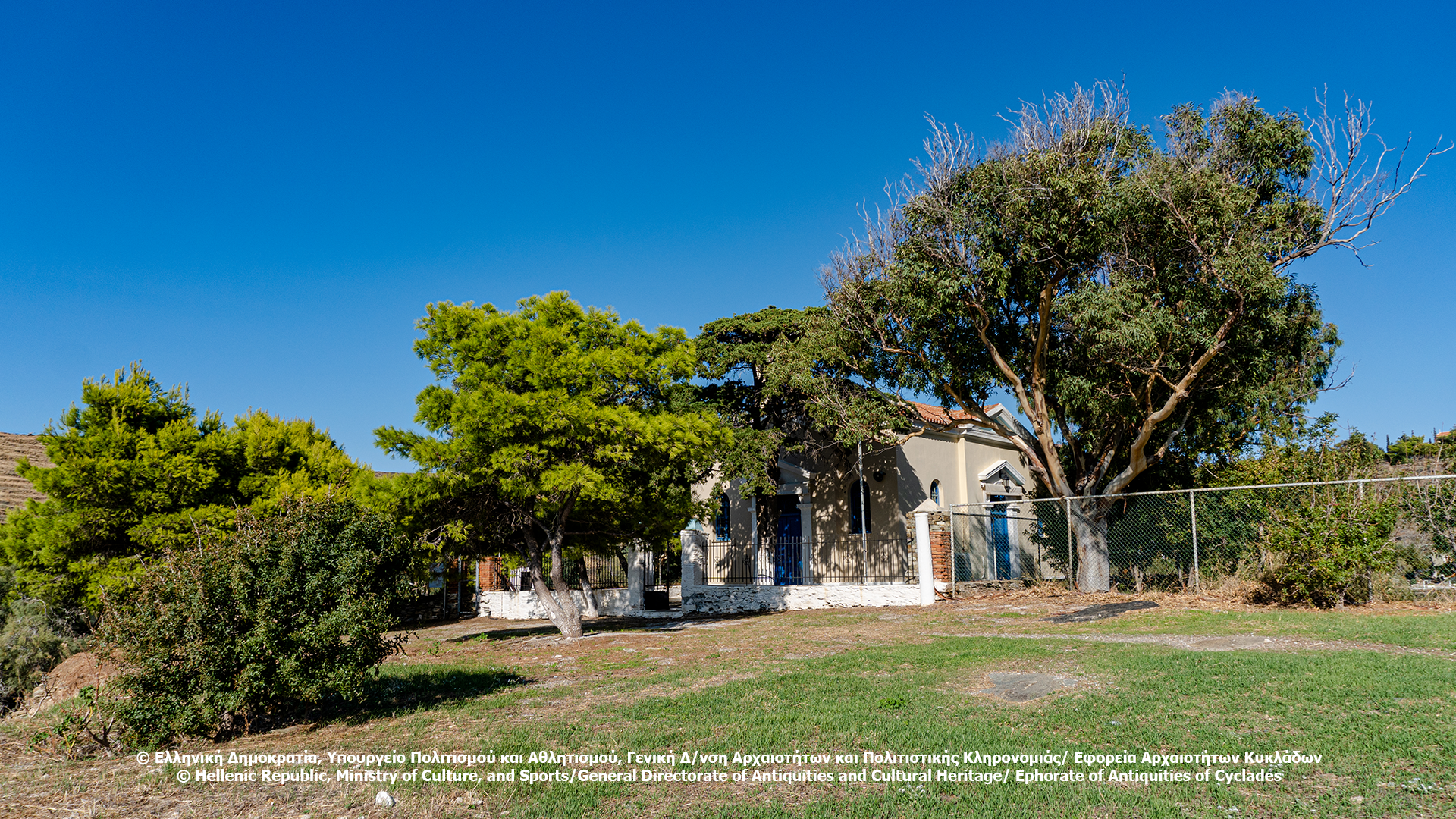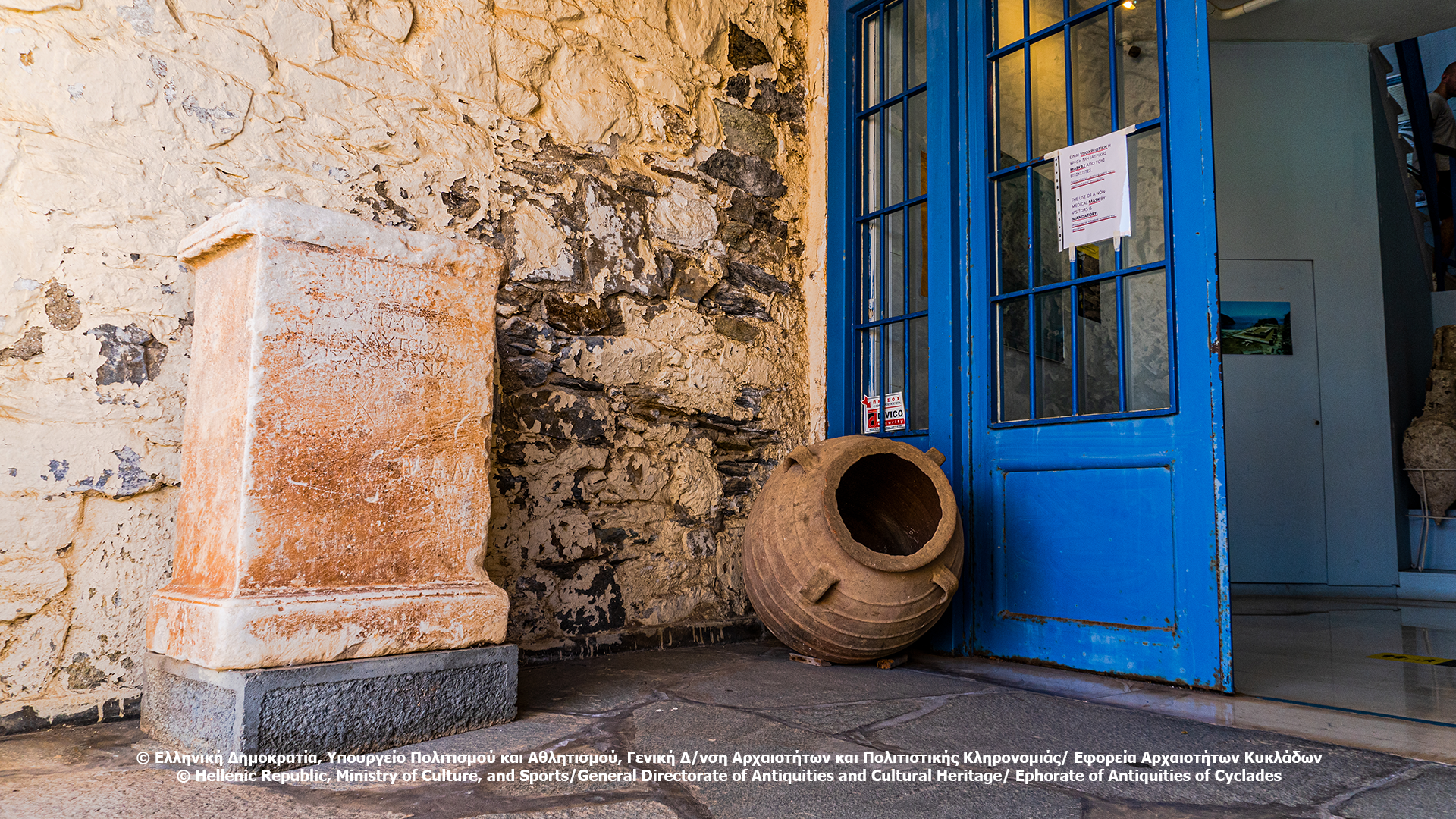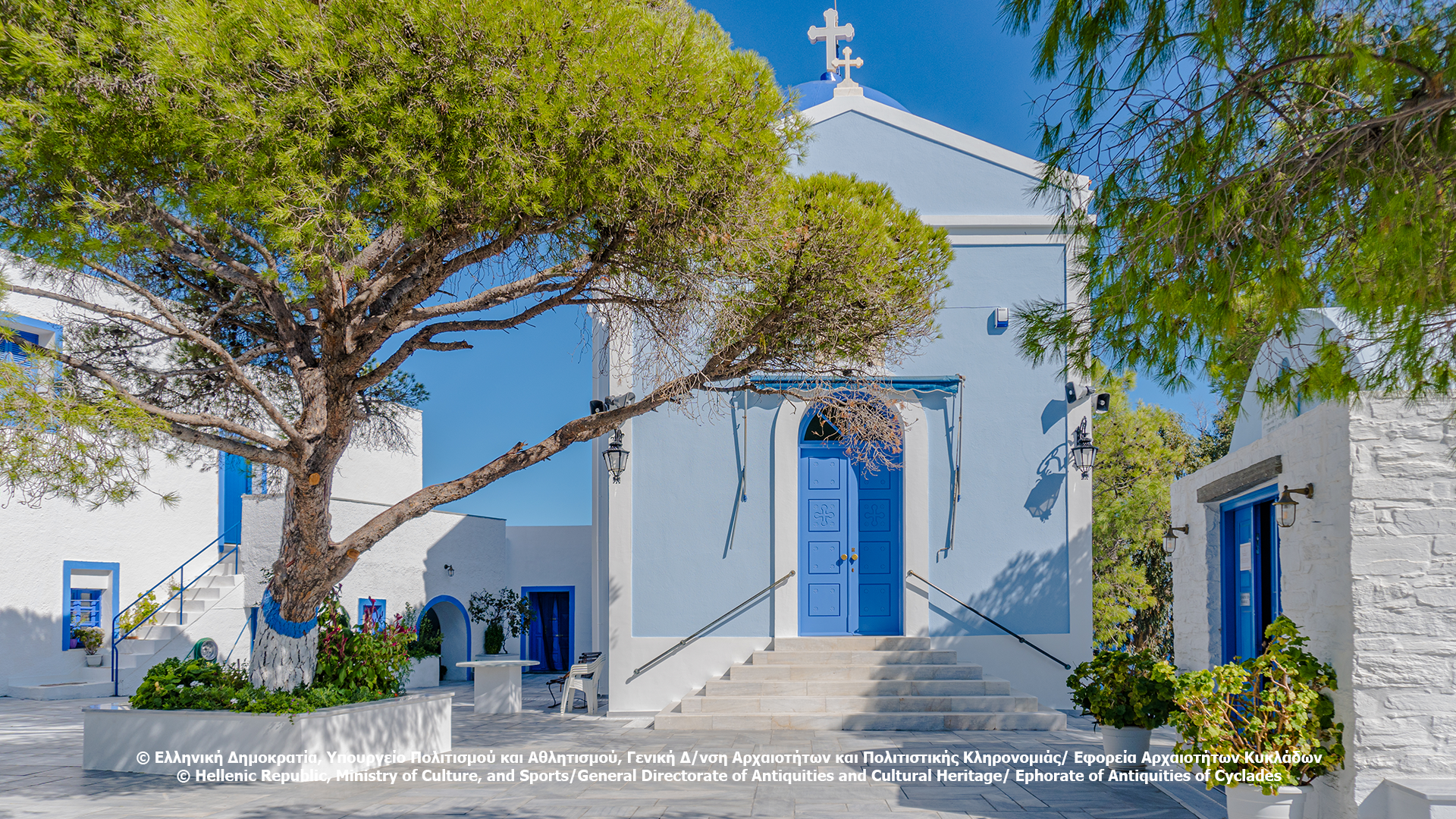The lack of running water did not favor the spread of watermills in the Cyclades, but there are few islands such as Kea with water resources that allowed the operation of such mills. The watermill of Mylopotamos, which has not been drastically altered by its inhabitants’ interventions so far, is a remarkable complex of watermills in Kea.
The valley of Mylopotamos located south of Korissia (port of Kea) spreads verdant like an “oasis” in the surrounding dry, Cycladic landscape.
Eleven grinding watermills, after which the ravine was named, are built along the riverbed. Tradition mentions 13, but where the other two stood is unknown. They operated all year round, even when water was scarce. It is unknown when they were first built. What is certain is that they existed during the years of Ottoman rule. Together with the windmills, they ground grain for the whole island and supplied flour and animal feed to the nearby villages. They were also the place to exchange news and social criticism (gossip) on the island. They operated until World War II, after which their decline was apparent. In the 1980s, only two mills were running, and just the mill of Philippeos was in operation up until recently. It used to operate once or twice a year, mainly for emotional reasons and so that young people do not forget their tradition. Also, the process to renovate another mill has begun. Two electric mills and the ready-made flours have forever set the island’s mills out of operation.
Basic areas of the watermill
Each watermill consists of:
-the “varadi” (waterfall tower),
-the workshop, where the flour is ground, in a separate or single room with the warehouse and the customers’ waiting area,
-the “zourio”, an underground space that houses the impeller and
-the miller’s residence, in the same or separate building.
In some cases near the mills, small buildings (stegadia) are intended for various uses. They used them as warehouses, where they housed their oven or the miller stabled his donkey. The people of Tzia call this complex “Kathendra”.
Entry fees:
Ελεύθερη Είσοδος

